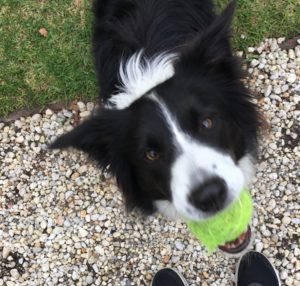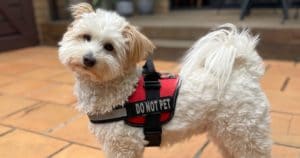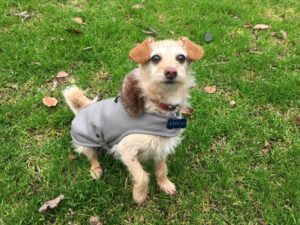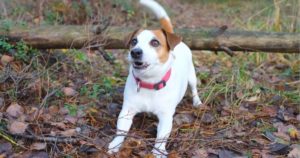
Clicker training a dog is a great way to help your dog understand what it is you want from them and is an important part of positive reinforcement training.
Dogs can only make connection between a behaviour (their action) and a consequence (good or bad) if the consequence/reward is given at the time they are displaying that action.
By using a clicker or a verbal reinforcer such as ‘yes’ or ‘good dog’, it allows you to mark the desired behaviour and lets them know a reward is coming.
It’s all in the timing and first you have to condition your dog to the marker, being the clicker in this example. To do this you can use a treat, toy, game of tug, or praise – whatever motivates them the most – as a reward.
In the very early stages of clicker training, where you need to condition them to the reinforcer (being the clicker) they don’t need to do anything for their reward.
Step 1: Simply press the clicker and immediately give them the reward (must be within 2-3 seconds).
Practise this a few times every day until you are confident that they understand that the sound equals a reward. It’s important that every time you use the clicker (or verbal reinforcer “yes” “good dog”) that it is immediately followed with a treat in the early teaching phase.
Step 2: You can then add a bit of distraction to the process, pressing the clicker while your dog is not looking at you, or is distracted. If you have successfully started to condition them to the marker as per Step 1, you dog should look to you when they hear the clicker in anticipation of their reward.
You will find puppies can be conditioned to a reinforcer very quickly, whereas some older dogs might take a bit longer so keep working at this stage until you are sure that your dog is reliably (at least 90% of the time) turning to you whenever they hear the clicker.
Step 3: Once you have fully conditioned the reinforcer you can then start to use it in your obedience training. Clicker training, or using a verbal reinforcer, in your training really is a great way to communicate effectively with your dog. It leaves no room for confusion as to what behaviour or action you want from them.
Whenever you are teaching your dog something new and are still in the early teaching phase with any training, you should continue to reward your dog every time they do it.
Once they are reliably performing and understand the task, you can move to an intermitted schedule of reinforcement, which means you reward them less frequently and start to hold the high value reward such as treats to when they perform quicker, faster, better. Learn more about Schedules of Reinforcement here.
I always use my clicker or verbal reinforcer “yes” when my dogs do the right thing in any scenario, not just when training, to continually reinforce the behaviours I want from them.
They may not always get a treat when I click or say ‘yes’, but because they are successfully conditioned to both a clicker and “yes” as markers, it elicits a physical response within them in the same way a treat actually would anyway. This is known as Classical or Pavlovian Conditioning as is at the heart of dog training.
Praise is an easy reward to give as well when no treats are around, so do make sure you do keep up some kind of schedule of reward for desired behaviour at all stages of your dog’s training and life
About the Author: Lara Shannon is a certified dog behaviourist and trainer, pet food nutrition specialist, Executive Producer and Host of Pooches at Play on Channel 10 and editor of Poochesatplay.com. Lara also runs her own dog training business in Melbourne’s Bayside area and is the Author of World of Dogs and Eat, Play, Love (Your Dog).

Does your dog have a ball obsession?

Understanding dogs with anxiety

The importance of recall training for dogs

The benefit of interactive toys for dogs



Get your paws on Lara Shannon’s best selling books ‘Eat, Play, Love (your dog) and World of Dogs.
Available in Australia, USA, UK and Canada.